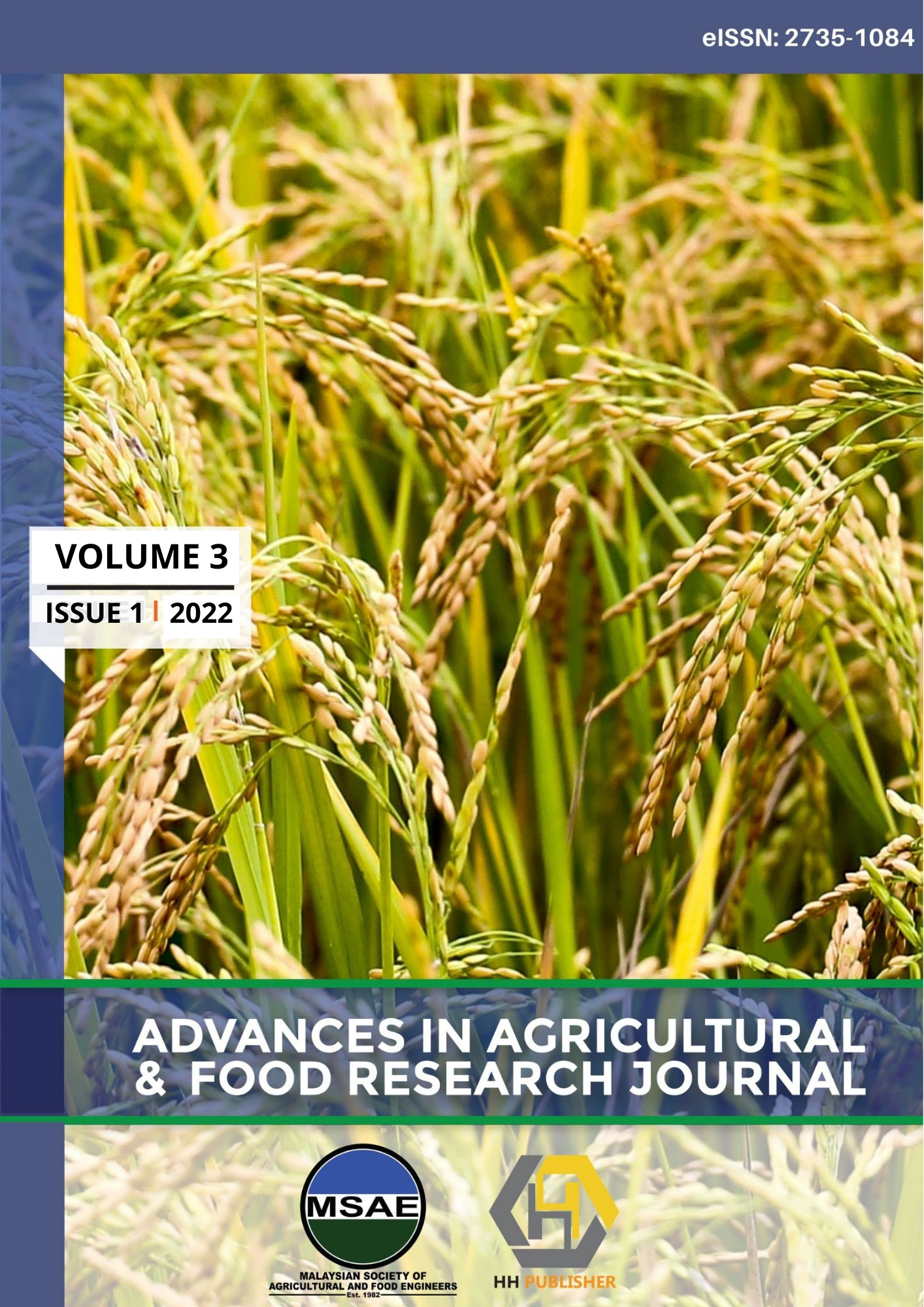Monitoring of Soil Moisture Using Smart Irrigation System in Chinese Cabbage (Brassica Chinensis) Cultivation
DOI:
https://doi.org/10.36877/aafrj.a0000252Abstract
Smart irrigation system is a Precision Agriculture (PA) based device that can automate the irrigation process by analysing soil moisture. The sensor used is a soil moisture sensor that acts as the brain to the system, which will control the whole irrigation system. This research was conducted in the irrigation workshop at UITM Malacca, Jasin Campus, with four treatments and four replications in each treatment. The treatments were T1: manual irrigation (regular planting), T2:40% of soil moisture content, T3:45% of soil moisture content, and T4:50% of soil moisture content. The experimental design used in this study was completely randomized (crd). The parameters involved in this study were plant height, number of leaves, root length, fresh weight, and dry weight of Brassica Chinensis. The data were analyzed using SPSS statistical version 26, and the data analysis involved was average means, analysis of variance (ANOVA), and post hoc test (Bonferroni test). The result shows a significant difference between treatments for plant height, number of leaves, fresh weight, and dry weight parameter since the significance value is less than (0.05), p-value >α, 0.05. While no significant difference between treatments for root length. For all parameter measures of Brassica Chinensis, which was height, the number of leaves, length root, fresh weight, and dry weight shows that T4 had the highest mean, while T2 had the lowest mean. In conclusion, T4 (50% of soil moisture content) was the best percentage to grow a healthy plant.
Downloads
Published
How to Cite
Issue
Section
License
Copyright (c) 2021 Siti Mariam Shamsi, Amirul Yusoff

This work is licensed under a Creative Commons Attribution-NonCommercial 4.0 International License.
Author(s) shall retain the copyright of their work and grant the Journal/Publisher right for the first publication with the work simultaneously licensed under:
Creative Commons Attribution-NonCommercial 4.0 International (CC BY-NC 4.0). This license allows for the copying, distribution and transmission of the work, provided the correct attribution of the original creator is stated. Adaptation and remixing are also permitted.

This broad license intends to facilitate free access to, as well as the unrestricted reuse of, original works of all types for non-commercial purposes.
The author(s) permits HH Publisher to publish this article that has not been submitted elsewhere.

.png)

.jpg)



